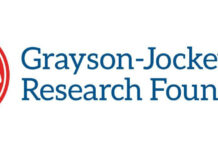 Day in and day out, your horse eats the same thing. Boring… yes. Unbalanced… definitely. You’d like to add some fresh fruits to his diet, especially this time of year with all the summer variety available, but he’s already on the chubby side and you’re afraid of giving him too much sugar. Many, if not most, overweight horses are insulin resistant and it’s true, you do need to limit the sugar (and starch) content of the diet. But there still can be room for some tasty fresh fruit. The key is to evaluate how much sugar your horse is getting in his entire diet.
Day in and day out, your horse eats the same thing. Boring… yes. Unbalanced… definitely. You’d like to add some fresh fruits to his diet, especially this time of year with all the summer variety available, but he’s already on the chubby side and you’re afraid of giving him too much sugar. Many, if not most, overweight horses are insulin resistant and it’s true, you do need to limit the sugar (and starch) content of the diet. But there still can be room for some tasty fresh fruit. The key is to evaluate how much sugar your horse is getting in his entire diet.
Horses love bananas (one of their favorite flavors). They also like watermelon, berries, grapes, and of course, apples. Carrots, though not a fruit, also contain sugar. The chart below gives you an idea of how much sugar is in each of these foods:
Sugar Content of Common Fruits* | |
| Fruit or vegetable | Grams of sugar |
| Apple, one medium | 13 |
| Apricots, one (no pit!) | 3 |
| Banana, one 7 inch | 14 |
| Blueberries (one cup) | 15 |
| Cantaloupe, 1/8 small melon | 4 |
| Carrot, one 8 inch | 3 |
| Dates, three (no pits!) | 12 |
| Orange, one medium | 15 |
| Grapes (red, green), 10 grapes | 8 |
| Honeydew melon, 1/8 7” melon | 13 |
| Peaches, 2 3/4 inches (no pit!) | 15 |
| Pears, one medium | 17 |
| Raspberries (1 cup) | 5 |
| Tangerines, 2 1/2 inch | 9 |
| Strawberries, 3 medium | 3 |
| Watermelon, one wedge | 28 |
Don’t forget the peel!
One really great way to offer your horse something tasty and nutritious is to feed the peel instead of the whole fruit. Apple peels, banana peels, orange peels, watermelon (and other melon) rinds – all of these have less than 1 gram of sugar per cup.
Let’s put this in perspective with the rest of the diet
In an effort to reduce the sugar (and starch) content of your horse’s diet, you should strive to feed less than 12% non-structural carbohydrates (NSC). NSC includes not just sugar, but also starch and fructans. If you’ve had your hay or pasture analyzed, look at the ethanol soluble carbohydrate (ESC) value – that’s the simple sugar content. ESC values are typically about half the total NSC. Below are ESC and NSC percentages for a few forages and fibrous feeds:
Normal Ranges of ESC (simple sugars) and NSC for common forages and fibrous feeds**
| Feedstuff | %ESC | %NSC |
| Alfalfa hay | 5.7-8.7 | 8.8-13.3 |
| Alfalfa pellets or cubes | 4.67-7.73 | 7.2-12.3 |
| Beet pulp | 3.39-12.4 | 3.94-19.7 |
| Bermuda Grass hay | 4.7-9.9 | 9.1-17.3 |
| Grass hay | 4.6-10.2 | 8.0-17.7 |
| Grass pellets or cubes | 4.6-10.2 | 6.81-15.0 |
| Grass pasture | 3.97-11.6 | 6.1-20.1 |
| Grass/legume pasture | 6.7-15.4 | 7.9-17.8 |
| Oat hay | 6.84-17.2 | 14.9-29.3 |
| Rice Bran | 3.39-6.61 | 16.4-33.8 |
| Soybean hulls | 0.51-4.51 | 2.05-8.11 |
As an example, let’s assume your grass hay has 11% NSC, and 6% ESC. Excellent! That’s a good hay to offer your horse free-choice. If your horse consumes 25 lbs per day of this hay, he/she will consume 1.5 lbs of sugar (25 X .06). Converting that to grams (multiply by 454), and you have 681 grams of sugar. If your horse also eats six strawberries per day, you’ll be providing an additional 6 grams of sugar. This brings the total sugar intake to 687 grams per day, or 6.05% of the diet. Not much of a difference.
But, if you are feeding hay with a high %NSC, plus additional feeds, making the entire diet high already high in sugar and starch, adding fruit will only make things that much worse.
The goal: Reducing sugar in the entire diet gives you room to provide a small amount of fresh fruit. This will not only be pleasing to your horse, but will offer additional nutrients that do not exist in the current diet.
* Values obtained from https://nutritiondata.self.com
** Values obtained from the University of Georgia: https://aesl.ces.uga.edu/Forms/NSCCircular.pdf
Dr. Juliet Getty has taught and consulted on equine nutrition for more than 20 years. The Getty Equine Nutrition, LLC website offers a library of articles, previously recorded teleseminars, and a nutrition forum. Subscribe on the website to her free and informative monthly e-newsletter, “Forage for Thought.”







This is very good information. My son, also has to limit his sugars/carbs, and this information is very useful. I took in a pony which has foundered before, and I must limit her grass eating time.
Thank you! I didn’t know how different fruits/vegetables/feeds compared in their sugar content, but now I can choose lower-sugar options. My horse hasn’t been diagnosed as insulin-resistant, but he is overweight.
Wow, a lot of the fruits on this list, I didn’t even know that I could give them to my mare. Now I can’t wait to experiment and see what she likes!
so much for a horse to enjoy
Realistically, all horses can benefit from eating a diet as low in NSC/sugars as possible. I feed all of my horses as if they were IR, for the simple reason that it is the number one way to prevent metabolic issues before they happen. Many commercial feeds are too high in sugar – utilizing grains and grain byproducts, molasses, etc. Also, most owners feed their horses too many treats. If you become your horse’s personal “pez dispenser”, a treat stops being a treat and becomes a part of the horse’s overall diet. My personal preference is to give the occasional carrot, or to feed a low-sugar treat/cookie now and then. Otherwise I’ll simply give a horse a little handful of hay pellets as a reward. It’s a normal part of most of my horse’s daily diets, but they think that it’s a treat because it’s just a handful and not at a regular feeding time. The horse gets something he/she enjoys and the emotional enjoyment of getting a treat, without adding extra sugar.
My horse absolutely LOVES fruit!
Great guidelines.